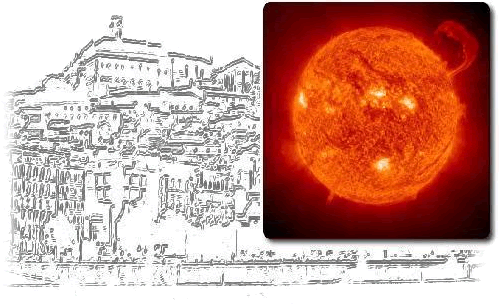|
Solar flares have dramatic coronal manifestations but the bulk of the
flare radiation comes from the denser lower atmosphere, being the main location of
flare energy dissipation and radiation. The presence and many of the characteristics
of a particular spectral line or continuum are determined mostly by the physical
properties of the environment in which it is formed. Further insight into the
flaring chromospheric plasma can be explored by employing models. Realistic
simulations of observable parameters, such as spectral line profiles and continuum
emission, dictate that non-equilibrium plasma modeling must be treated together with
non-LTE radiation hydrodynamics. Comparing the output of such models and
observational data we may be able to piece together the characteristic structure of
a flaring atmosphere. The Extreme ultraviolet Variability Explorer (EVE), on board
of the Solar Dynamics Observatory (SDO) launched in 2010, provides Sun-as-star
spectral measurements in the EUV range 5-105 nm, with spectral resolution of 0.1 nm.
We present our survey of the 4 years of EVE observations of solar flares and the results of our
analysis of the irradiance of H Lyman beta, gamma and delta, He I 58.4 nm, and He
II 30.4 nm emission lines. The flare emission of these lines is usually strong
enough to be detected by EVE, even for weak GOES C-class events. The observed
irradiances are compared to the output of non-LTE radiation hydrodynamics models to
better constrain the model input and help to provide a better diagnostic of the
plasma temperature, density and ionization of the different ions in the flaring
chromosphere. |



